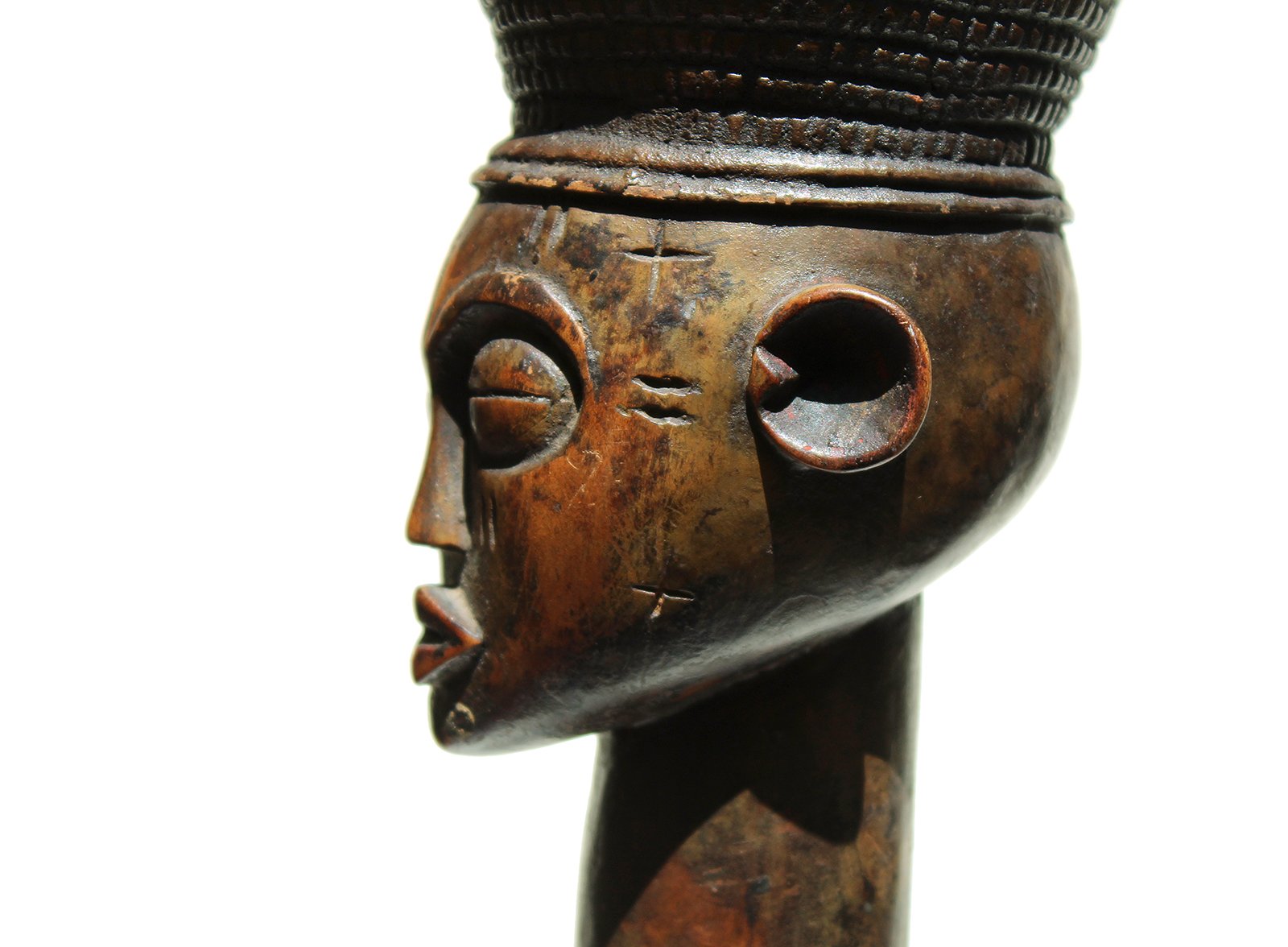 Image 1 of 11
Image 1 of 11

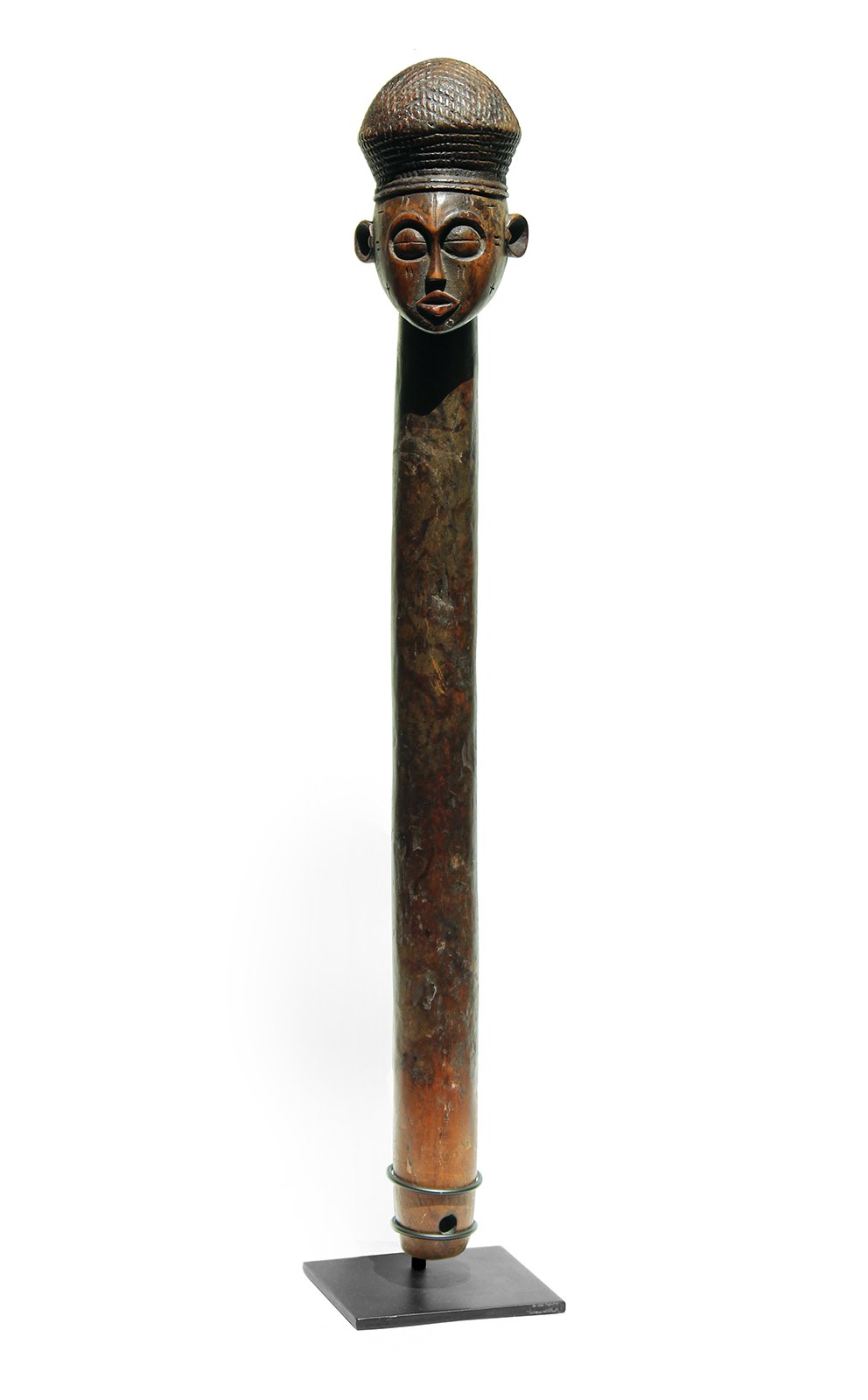 Image 2 of 11
Image 2 of 11

 Image 3 of 11
Image 3 of 11

 Image 4 of 11
Image 4 of 11

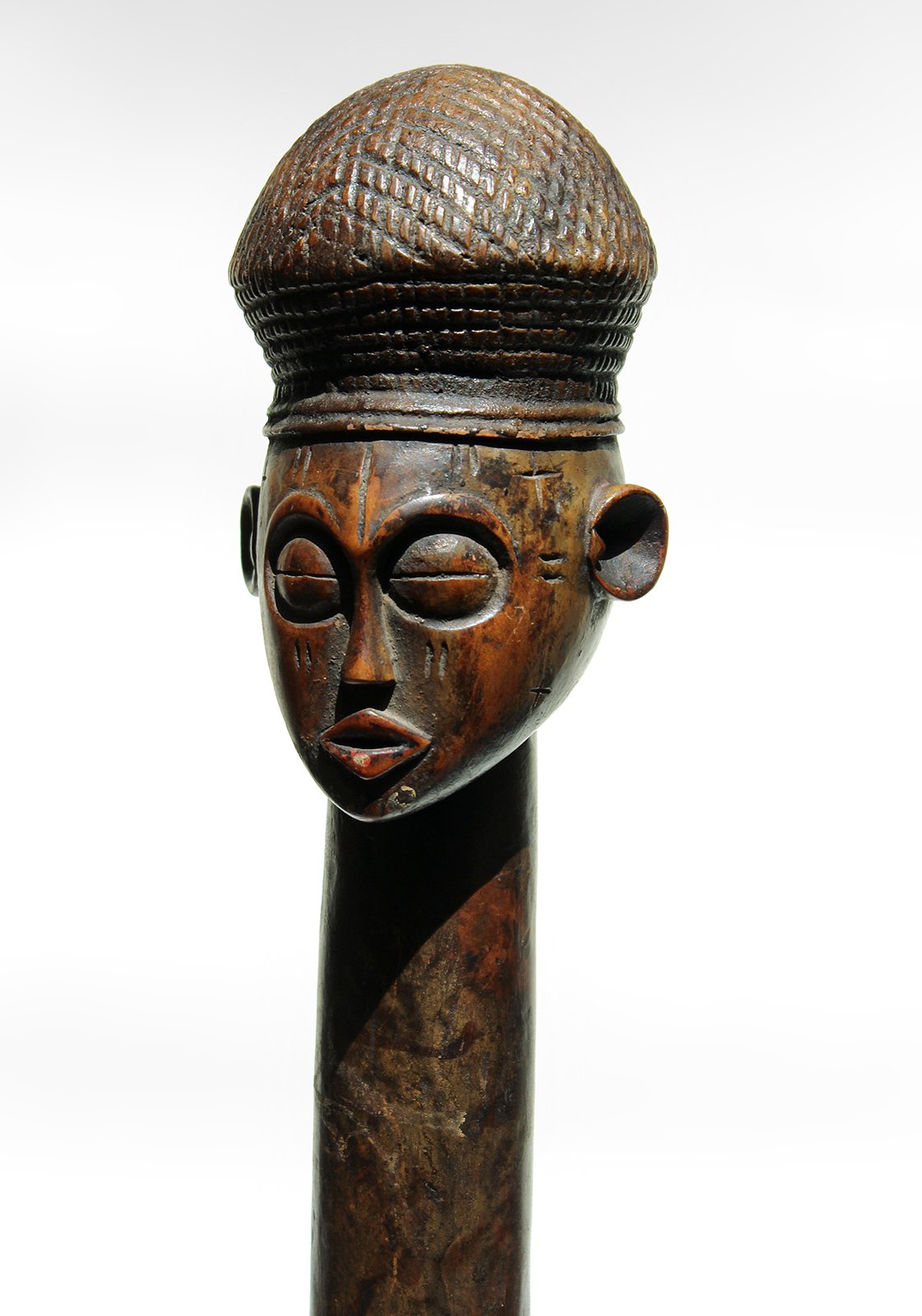 Image 5 of 11
Image 5 of 11

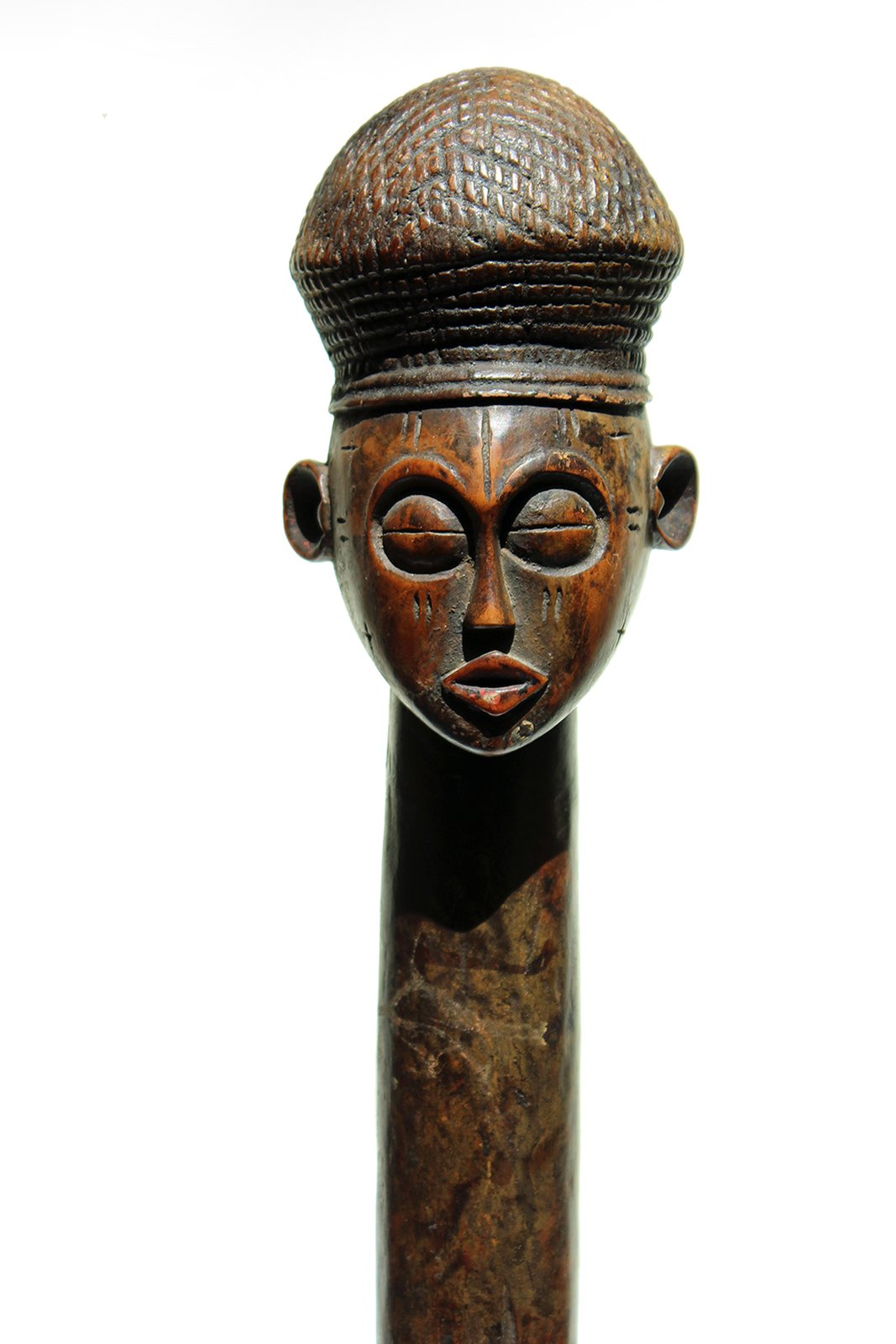 Image 6 of 11
Image 6 of 11

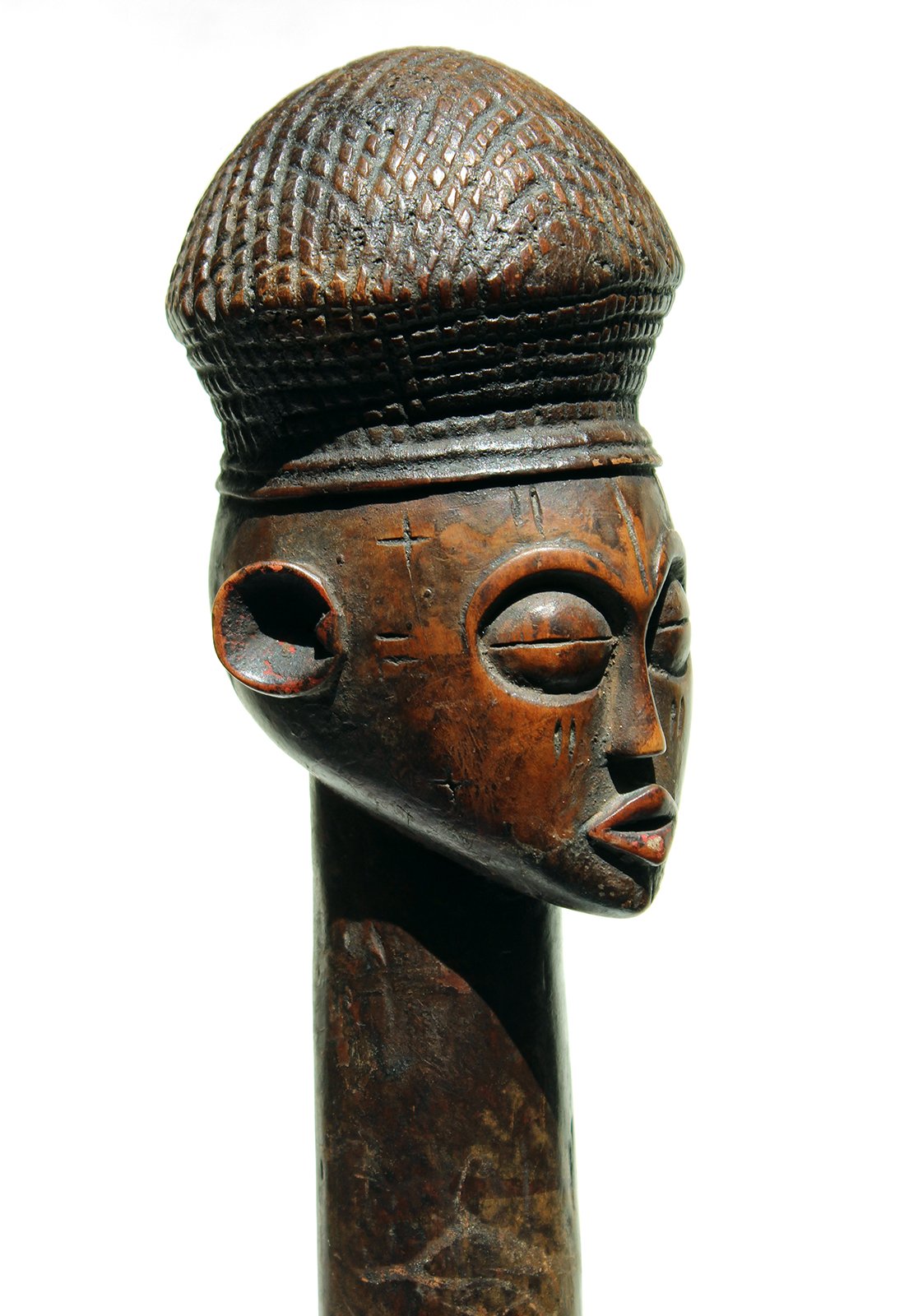 Image 7 of 11
Image 7 of 11

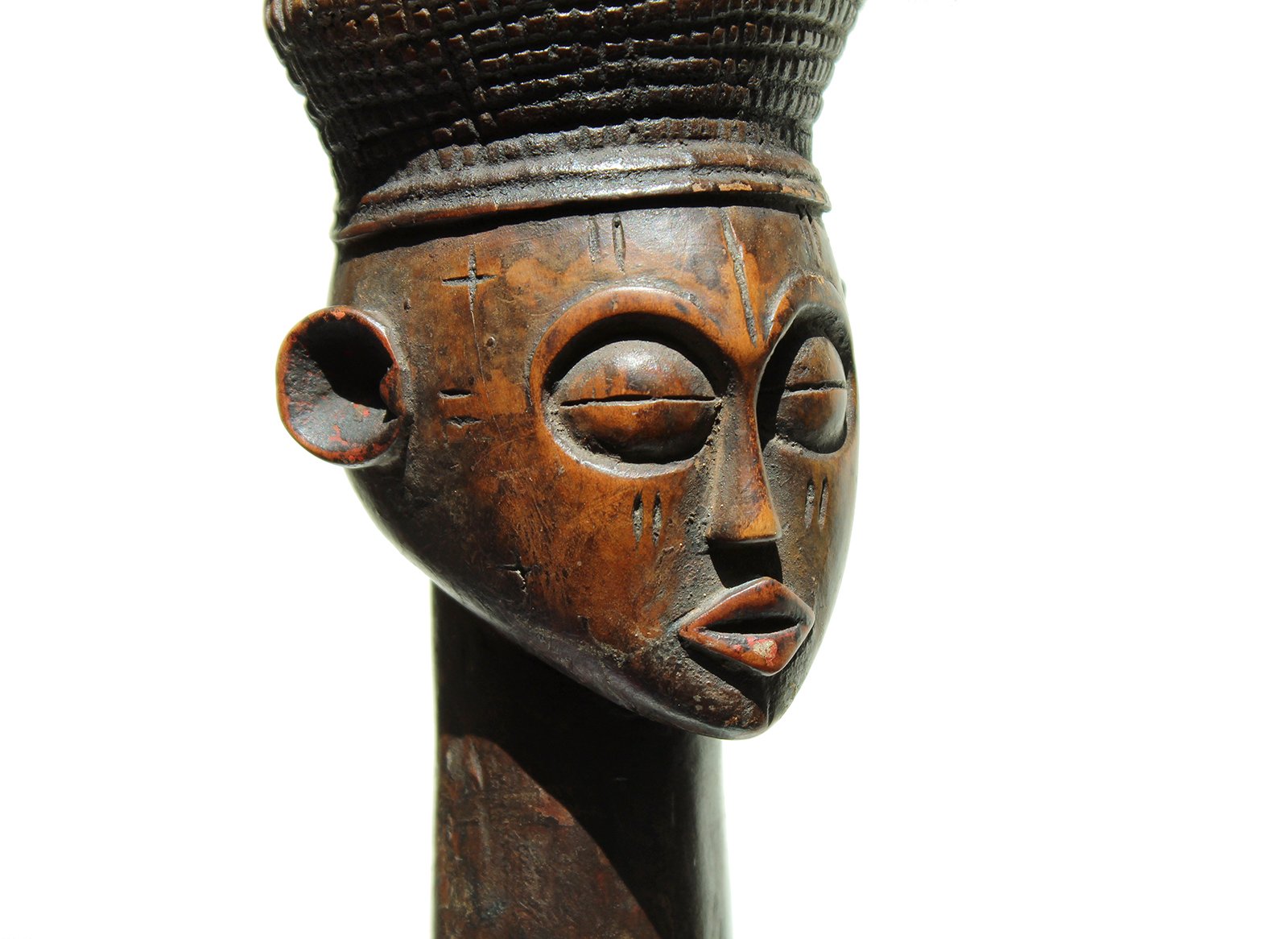 Image 8 of 11
Image 8 of 11

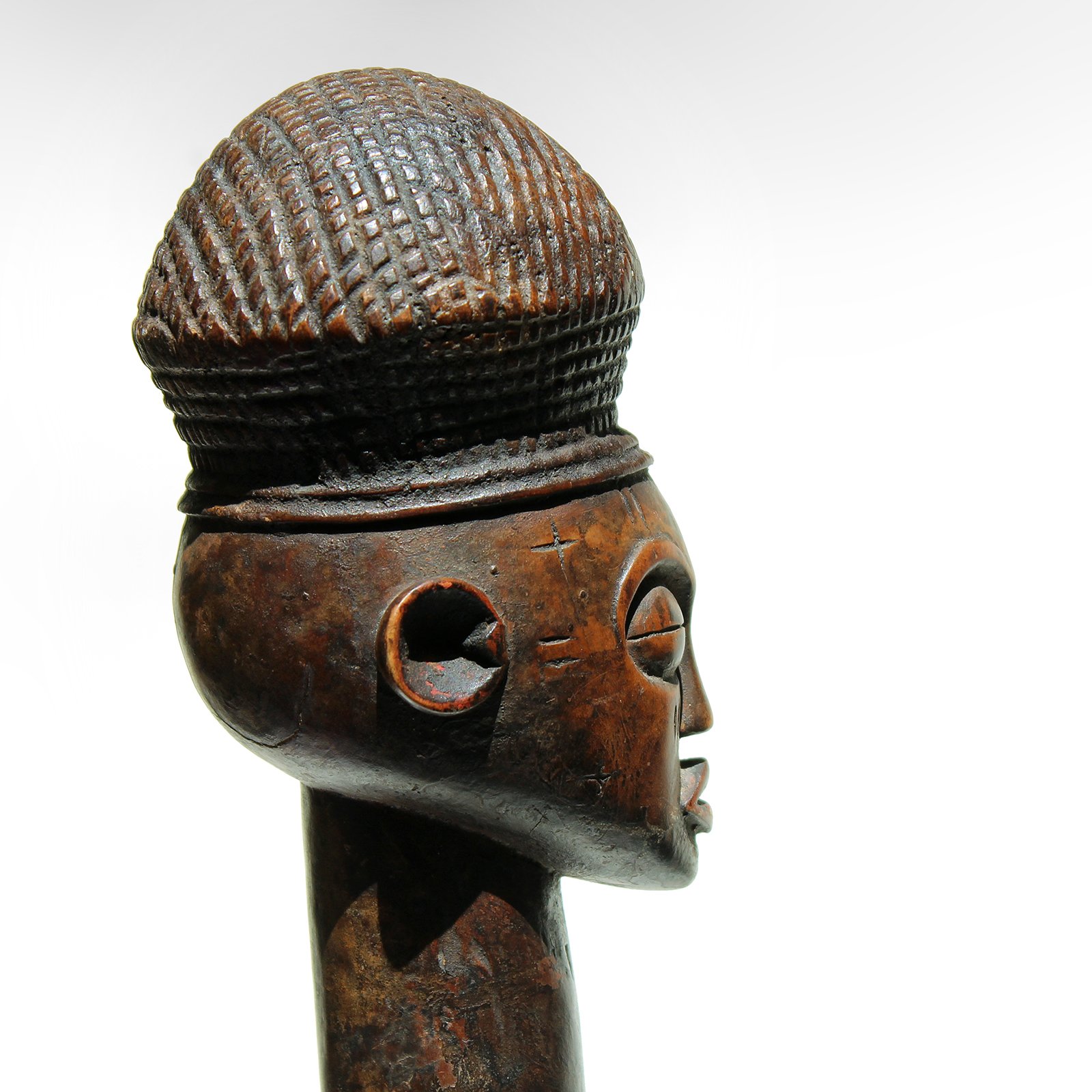 Image 9 of 11
Image 9 of 11

 Image 10 of 11
Image 10 of 11

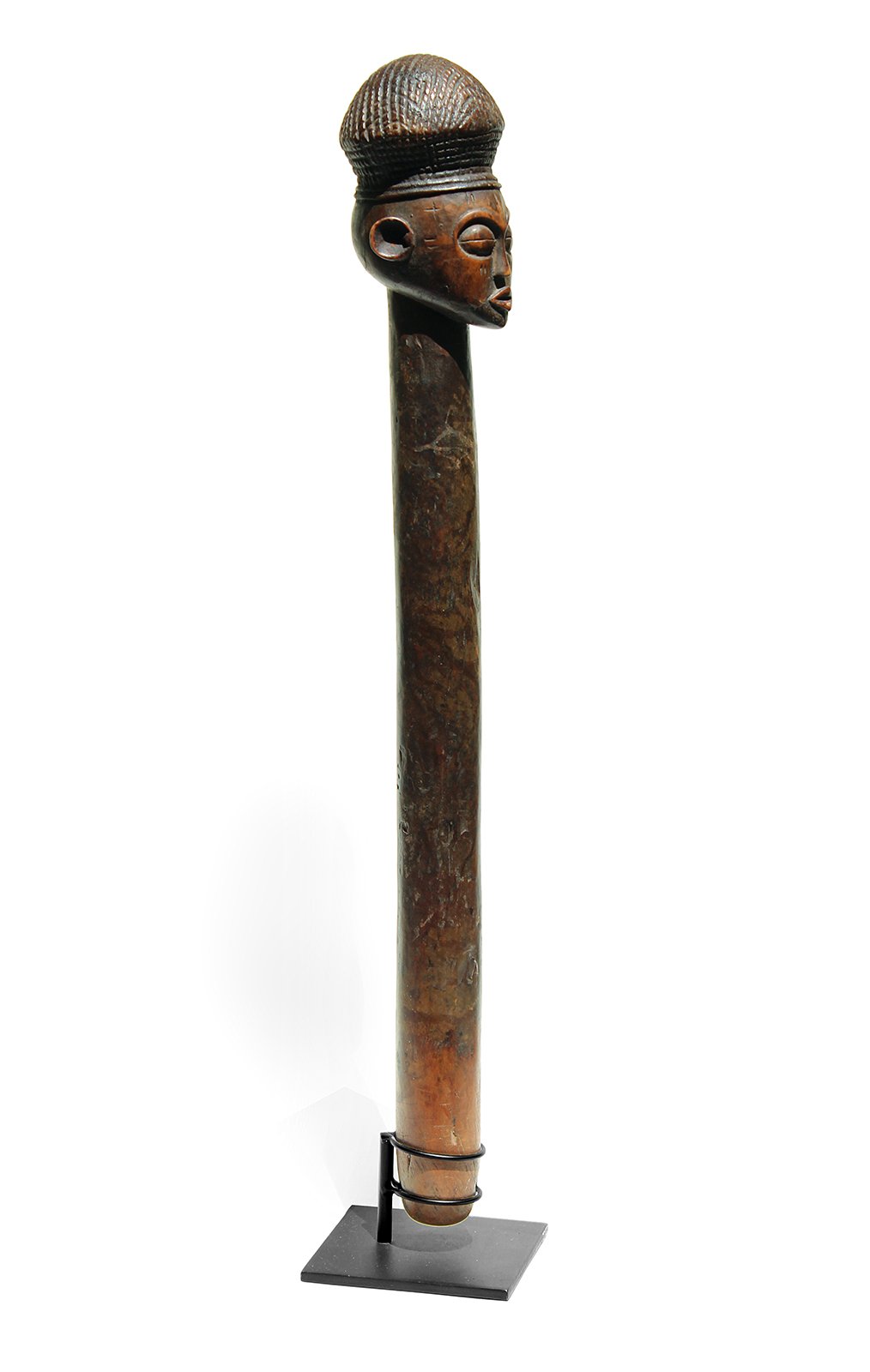 Image 11 of 11
Image 11 of 11












Ovimbundu staff
Chokwe peoples
Angola
Early 20th century
H. 63,5 cm
Provenance :
Jack Faxon, Michigan State Senator and creator of the Michigan Council for the Arts.
The Ovimbundu staffs, reserved for the use of notables, are carved at their extremity of royal figures, in the form of a head or a bust. This staff is distinguished by its beautiful sculptural qualities, playing on a rare stylization of volumes, the asymmetry of features and the power of expression.
Careful attention is paid to accurate depiction of tattoo marks, coiffures, and headdresses, such as the high curving one worn by the Chokwe chief himself.
The broad expanse of open savanna in southern Democratic Republic of the Congo and northern Angola witnessed the rise of several wealthy and powerful states during the sixteenth and seventeenth centuries. In these societies art objects are made to show the power of the chief. Chokwe chiefs and those of related peoples, such as the Songo and Ovimbundu, possess many articles - chairs, stools, ceremonial weapons, staffs of office, even tobacco pipes - elaborately carved with figures and scenes of village life.
Chokwe peoples
Angola
Early 20th century
H. 63,5 cm
Provenance :
Jack Faxon, Michigan State Senator and creator of the Michigan Council for the Arts.
The Ovimbundu staffs, reserved for the use of notables, are carved at their extremity of royal figures, in the form of a head or a bust. This staff is distinguished by its beautiful sculptural qualities, playing on a rare stylization of volumes, the asymmetry of features and the power of expression.
Careful attention is paid to accurate depiction of tattoo marks, coiffures, and headdresses, such as the high curving one worn by the Chokwe chief himself.
The broad expanse of open savanna in southern Democratic Republic of the Congo and northern Angola witnessed the rise of several wealthy and powerful states during the sixteenth and seventeenth centuries. In these societies art objects are made to show the power of the chief. Chokwe chiefs and those of related peoples, such as the Songo and Ovimbundu, possess many articles - chairs, stools, ceremonial weapons, staffs of office, even tobacco pipes - elaborately carved with figures and scenes of village life.
